I've got quite a problem here trying to solve this 3 phase system (2nd U12 should be U31) and hope you can help me:
I'm trying to calculate the single phase voltages and currents for the drawn case with the connected neutral and once for the disconnected neutral.
However, the first problem for me already arises with the fact, that the sum of the phase to phase voltages is not zero, as indicated by the phasor diagram below:
After hours of research on the internet or in literature I couldn't find a single problem, calculation or simulation where this case was treated and if I think about it, it just doesn't make sense that the sum of phase to phase voltages isn't zero.
Therefore, the underlying question: Is this system even possible?
Thanks for reading and hoping for your answers!

